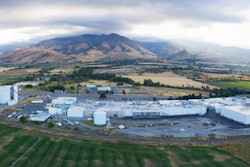Food packagers that plan to use post-consumer recycled plastics in their packages are eagerly awaiting the final ruling of the Food & Drug Administration that should clarify and speed up the process of gaining the agency's "letter of no objection" (LONO). And the value of that letter should increase as it becomes more defensible. But quickening the process will be the biggest improvement. Floyd Flexon, director of worldwide recycling for Johnson Controls Inc. (Manchester, MI), says his company waited "a little longer than I expected" to receive its LONO from the FDA. Johnson Controls, like other companies anxious to market a new recycled plastic resin, needed the LONO to prove to customers that the FDA had no problems with its new non-depolymerization process for recycling post-consumer polyethylene terephthalate (PET) in bottles. The FDA said that as long as the Supercycle(TM) resin was used in the approved manner, impurities would not get into the product, such as a soft drink, mouthwash or a food. The LONO was well worth the wait. Since December 1994, about 50 million bottles have rolled off blow-molding lines, including those at some of JCI's 19 molding plants. Recently, a bottler in Atlanta, Southeast Atlantic Corp., at least one Pepsi-Cola bottler and a non-beverage bottler were identified as early customers. Now, Johnson is in the process of getting Supercycle resin packaging qualified for "hot-fill" juice drink applications and for liquor bottles. Sometimes, however, the long wait for a LONO turns into a death watch. That's what happened with Packaging Corporation of America (Northbrook, IL). Lynn Carter, a senior attorney at PCA, says it took the company a full year to get a letter from the FDA for its polystrene packaging that included recycled resin. By the time the letter finally arrived, PCA had reallocated its new product development funds and the polystyrene packaging product with recycled content had been put on the shelf. The FDA's slow response to the PCA request for a letter "put the brakes on that project," explains Carter. Ed Machuga, an official in the FDA's division of petition control, says the agency has received three or four requests over the past few years for LONOs for recycled polystyrene packaging for foodservice applications. One of these was from FP Corp., a Japanese company that wanted to sell trays to a Japanese restaurant in New York City. FP approached the FDA because the trays included post-consumer polystyrene. The letter from the FDA to FP indicated the trays for the New York City restaurant would be okay as long as the finished trays were separated from food by a 1-mil thick layer of virgin polystyrene, and the trays would be intended to contact food for no longer than six to eight hours at 50°F or below. Joseph Bow, president of the Foodservice & Packaging Institute, who accompanied FP executives to meetings with FDA officials, likened the process to having a baby. "It took about nine months," he recalls. Removing delays Now the FDA wants to shorten that gestation period. It will publish a final rule late this summer or early this fall on what is called the "Threshold of Regulation (TOR)." Letters of no objection are issued according to the TOR. The proposed rule on the TOR was published on October 12, 1993. The background is this: The 1958 food additive amendments require that companies submit a petition to the FDA proving a food contact material such as packaging is reasonably certain not to cause harm to the consumer. Petitions have not been required-because of custom, not any changes to the 1958 law-when food contact articles contained substances that migrated in very low levels, causing no safety concerns. This FDA "custom" was essentially ratified by the Supreme Court in 1979 in the Monsanto v. Kennedy case involving acrylonitrile copolymer in beverage bottles. More than a decade later, the situation has changed in several important ways: * Today, analytical methods are more sophisticated than in 1958. Packaging that had caused only minimal migration in the 1960s might not have been detected by the science of that period. If retested today, more sensitive instruments might show migration to be measurable. * Another problem is the quality of the data sent in to the FDA supporting a request for a letter of no objection varies widely. This is because the FDA has never published guidelines for that data. * And probably of most importance to companies that buy and use packaging, the letters issued by the FDA have no legal standing. Changing course The October 1993 proposal-which will be made final soon-sought to correct those problems. The key provision sets a dietary concentration of 0.5 parts per billion as the point below which packaging would not need a LONO. The 0.5 ppb is equivalent to 1.5 micrograms/person/day based on a diet of 1귔 grams of solid food and 1귔 grams of liquid food per person per day. This basically gives the FDA a very wide margin of error, even if a compound in the packaging is later found to be a human carcinogen. "Additives" that are known carcinogens are completely barred under the Delaney amendment. But LONO would be available for packaging containing carcinogen "impurities" at a specific threshold level or below. It's called a "TD 50" value that's measured at more than 6.25 mg/kg bodyweight /day. These are not the only specifics expected in the final proposal. For the first time, FDA will identify and explain the testing methodology that it requires in the data that packagers or suppliers submit. If this can reduce or eliminate retesting, a significant time savings should result. In fact, the FDA has been using these guidelines informally for the past 18 months. They came into play during the reviews of the FP, PCA and Johnson Control applications, as well as others. Positive reaction Most of industry greeted the proposal enthusiastically. "We applaud the FDA for this initiative," says Lynn Carter of PCA. Jerry Heckman, whose Wash-ington law firm (Keller & Heckman) represents the Society of the Plastics Industry and many packaging companies and resin producers, says the final rule "will be a major victory. We will celebrate." Companies in most situations will still have to apply to the FDA for LONO. But the companies will know what kind of data to submit, and the approvals-which will stand up in court-will be granted much more quickly. There have been reservations expressed, however. One industry executive, who asks not to be named, believes that once the TOR rule is issued, the FDA will have to conduct an environmental impact statement (EIS) each time it issues a LONO. "That would be a giant pain in the tail," notes the executive, who explains that the FDA is currently way behind in doing EISes. He states that the FDA's failure to complete an EIS "drove PVC out of the bottle business." The FDA's Machuga says once the TOR is finalized, there will have to be an environmental impact review (EIR) done before a LONO is issued. These EIRs are less rigorous and less time consuming than an EIS. If the review turns up no problems, the FDA issues a "Finding of No Significant Impact (FONSI)." If there are potential environmental problems, the FDA conducts an EIS. "That has only happened two or three times in 30 years," states Machuga. PVC is one of them. Bruce Jones, associate director of professional and regulatory services for Procter & Gamble, thinks the 0.5 ppb dietary standard is too low. "The present proposal of 0.5 ppb is 200-fold lower than the chronic exposure level of 100 ppb, at which no chemicals are likely to induce toxicity when in the diet," he says. "This appears to contradict the law which requires the definition of food additive safety to be based on 'safety factors which, in the opinion of experts, are generally recognized as appropriate.'" Jones thinks a 5.0 ppb standard is called for. But the FDA's Machuga says the final rule will use the 0.5 ppb standard. Jones is also worried that confidential information on new packaging developed by P&G might be disclosed via the LONO process. In the October 1993 proposal, the FDA said it anticipated making the chemical name of the substance at the heart of the petition available to the public. Jones argues: "The disclosure of the specific chemical identity of the exempted substance, as well as the name of the company that requested the exemption, would, in many cases, be an unacceptable disclosure of trade secret information." It remains to be seen whether the FDA will compromise on that. The Foodservice & Packaging Institute has available "Facts About Recycled Content in Foodservice Packaging." For a copy, call Marla Donahue, 703-527-7505.






















